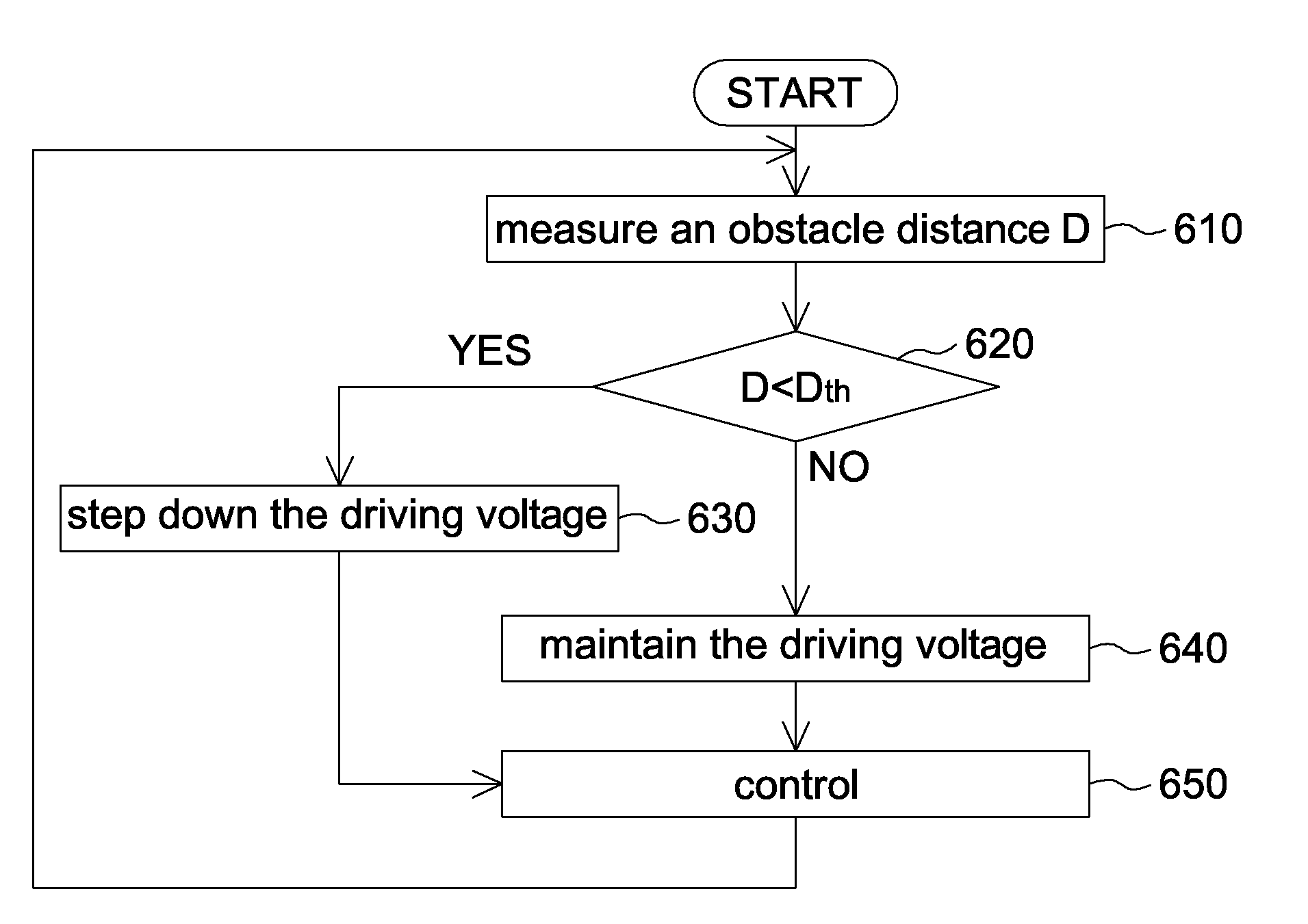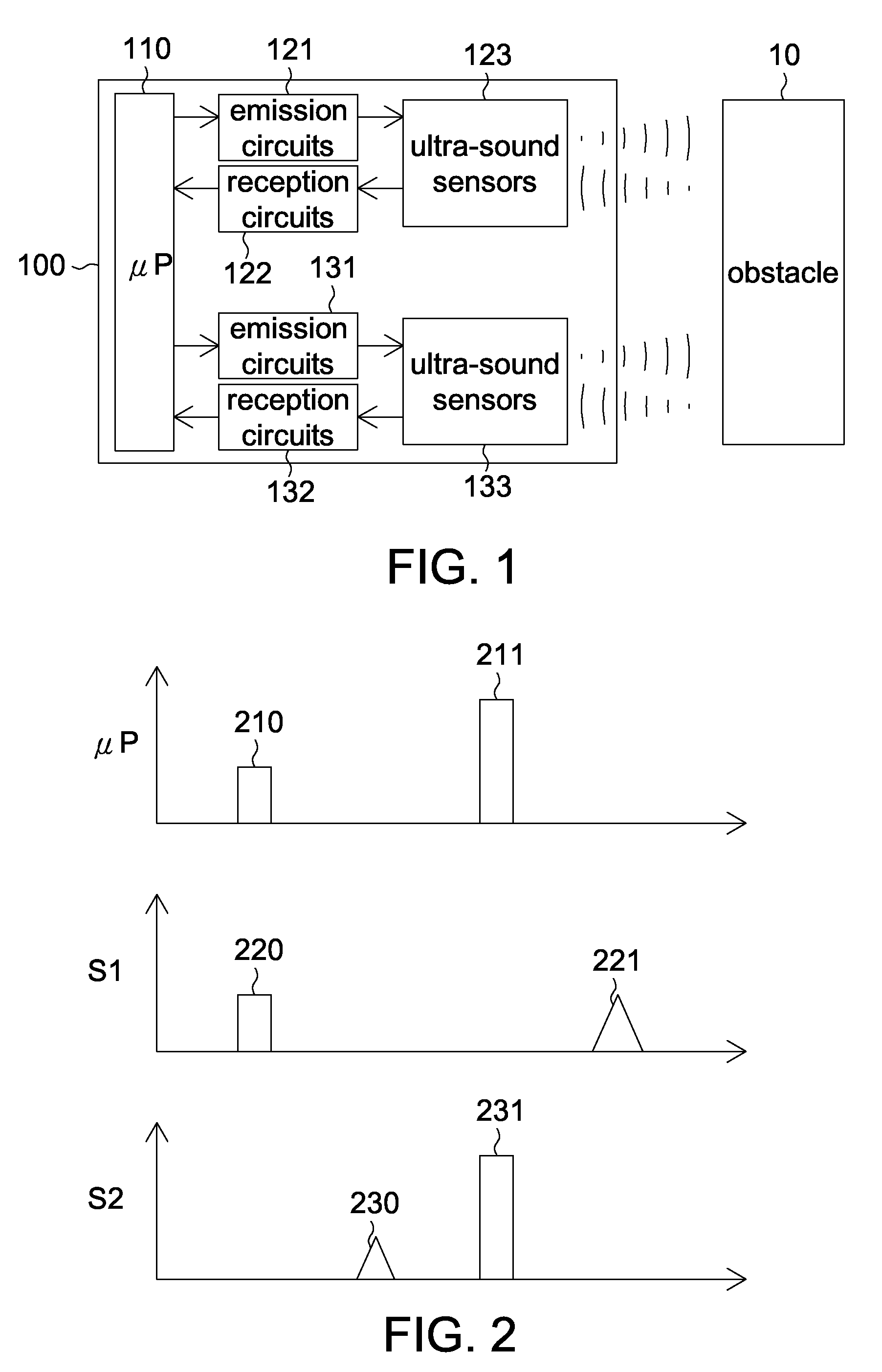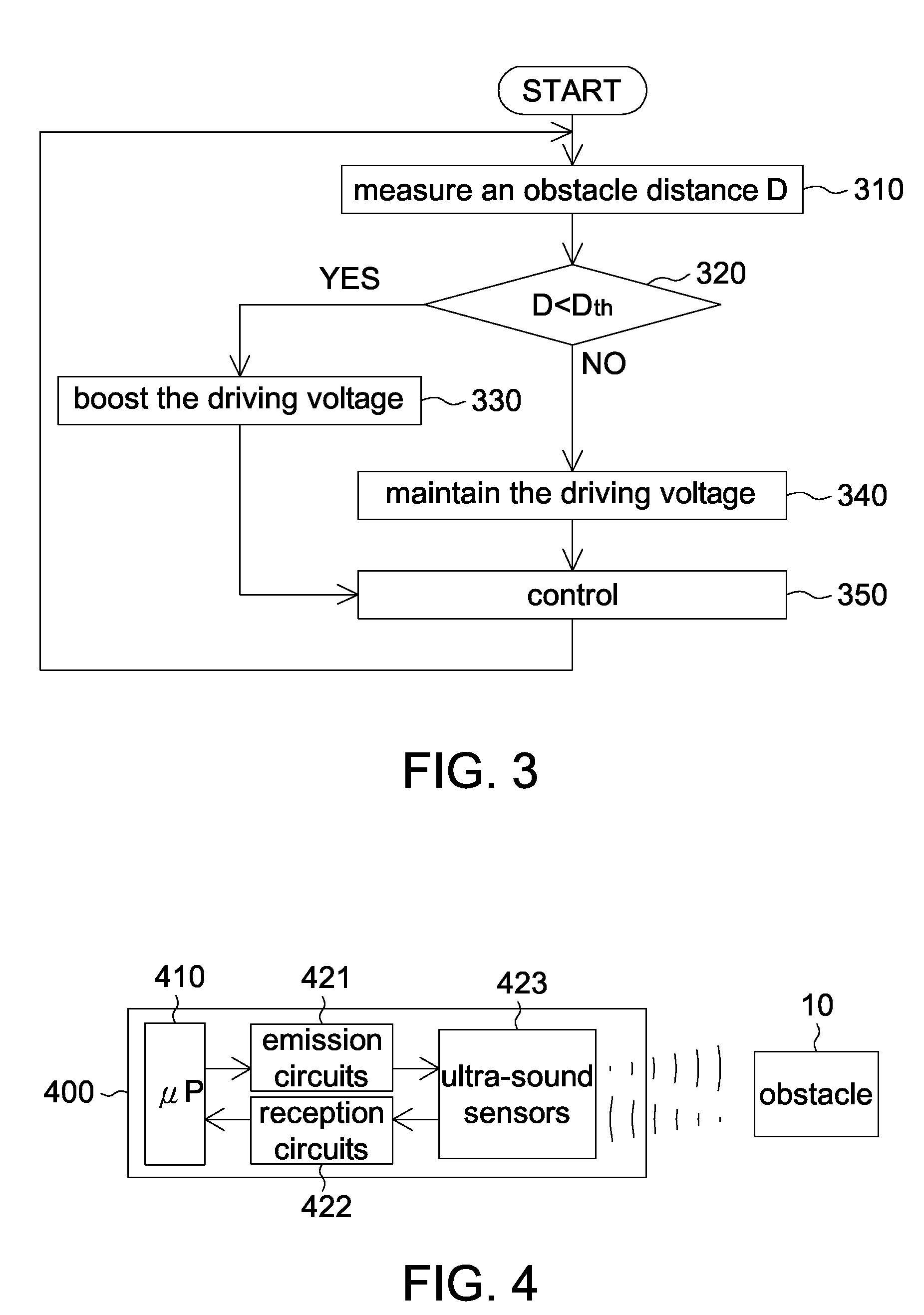Controlling Method for Ultra-sound Sensor
a control method and ultra-sound sensor technology, applied in the field of control methods for ultrasound sensors, can solve the problems of limited detection range of ultra-sound sensors, increased difficulty in correct ultra-sound receivers, and increased influence of multiple reflection effects of reflective ultra-sound waves, so as to increase the driving voltage of ultra-sound sensors and increase the reliability of detecting reflective ultra-sound waves
- Summary
- Abstract
- Description
- Claims
- Application Information
AI Technical Summary
Benefits of technology
Problems solved by technology
Method used
Image
Examples
first embodiment
[0021]In the first embodiment of the invention, when it is detected that the obstacle is very close to the ultra-sound sensor, the driving voltage of the ultra-sound sensor will be increased to increase the detection reliability. For the convenience of elaboration, the first embodiment of the invention is exemplified by the application of two ultra-sound sensors. However, it is understood that the invention is not limited thereto. That is, the application of more ultra-sound sensors can also be adapted to other embodiments of the invention.
[0022]FIG. 1 shows a functional diagram of an electronic device according to a first embodiment of the invention. As indicated in FIG. 1, the electronic device 100 comprises a micro-processor (μP) 110, two emission circuits 121 and 131, two reception circuits 122 and 132 and two ultra-sound sensors 123 and 133. The micro-processor 110 emits a driving signal to the emission circuits 121 and 131. The ultra-sound sensors 123 and 133 are driven to emi...
second embodiment
[0032]In the second embodiment of the invention, when it is detected that the obstacle distance is too short, the driving voltage of the ultra-sound sensor will be decreased to improve (i.e. shorten) the shortest detectable distance. The second embodiment of the invention is also adapted to a single ultra-sound sensor.
[0033]FIG. 4 shows a functional diagram of an electronic device according to the second embodiment of the invention. As indicated in FIG. 4, the electronic device 400 comprises a micro-processor 410, an emission circuit 421, a reception circuit 422 and an ultra-sound sensor 423. The functions of these elements are similar to the elements of FIG. 1, and are not repeated here.
[0034]FIG. 5 shows a timing diagram according to the second embodiment of the invention. In FIG. 5, μP denotes the voltage pulse signal emitted from the micro-processor, and S denotes the ultra-sound signal received / emitted by the ultra-sound sensor.
[0035]As indicated in FIG. 5, the voltage pulse si...
PUM
 Login to View More
Login to View More Abstract
Description
Claims
Application Information
 Login to View More
Login to View More - R&D
- Intellectual Property
- Life Sciences
- Materials
- Tech Scout
- Unparalleled Data Quality
- Higher Quality Content
- 60% Fewer Hallucinations
Browse by: Latest US Patents, China's latest patents, Technical Efficacy Thesaurus, Application Domain, Technology Topic, Popular Technical Reports.
© 2025 PatSnap. All rights reserved.Legal|Privacy policy|Modern Slavery Act Transparency Statement|Sitemap|About US| Contact US: help@patsnap.com



